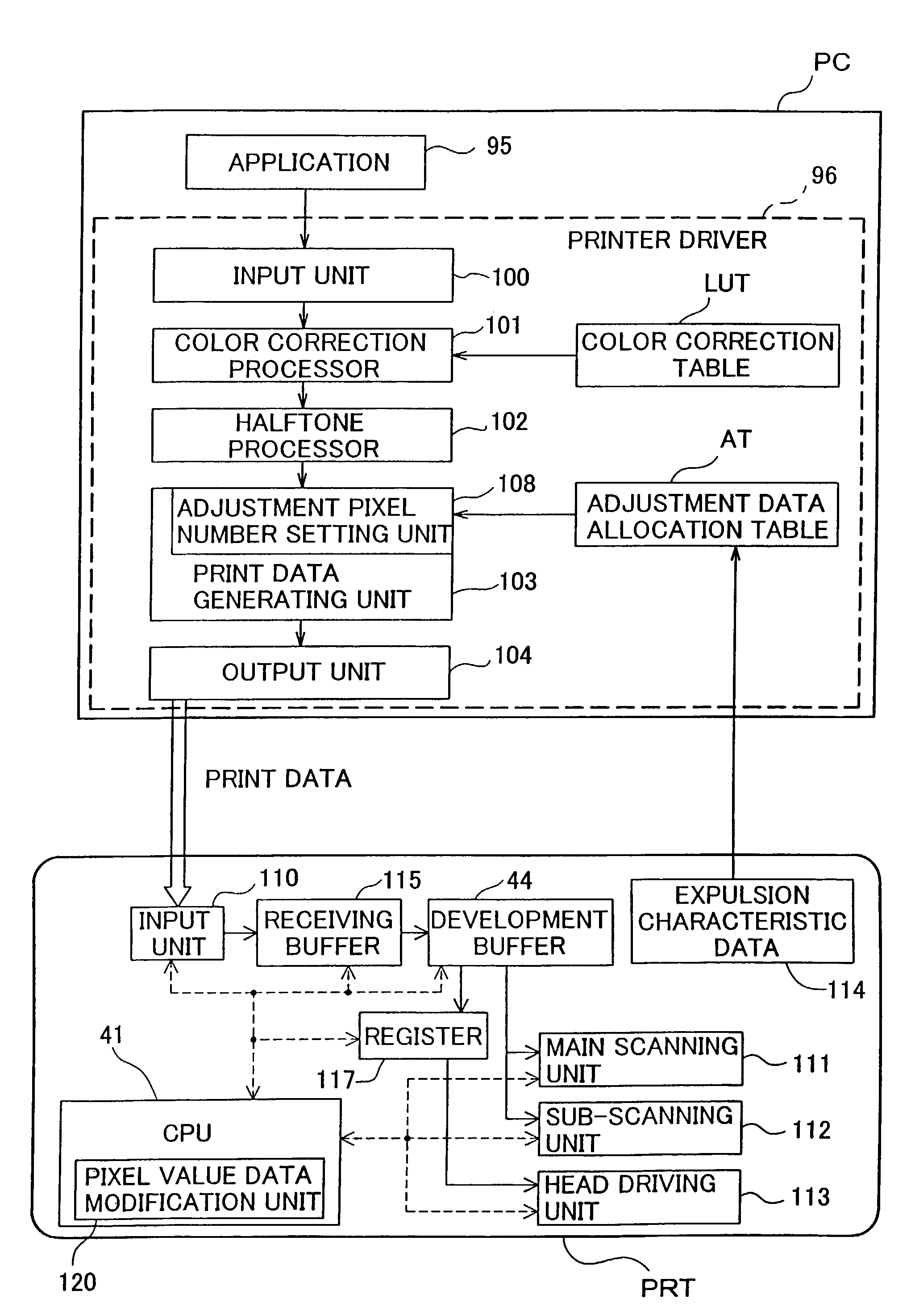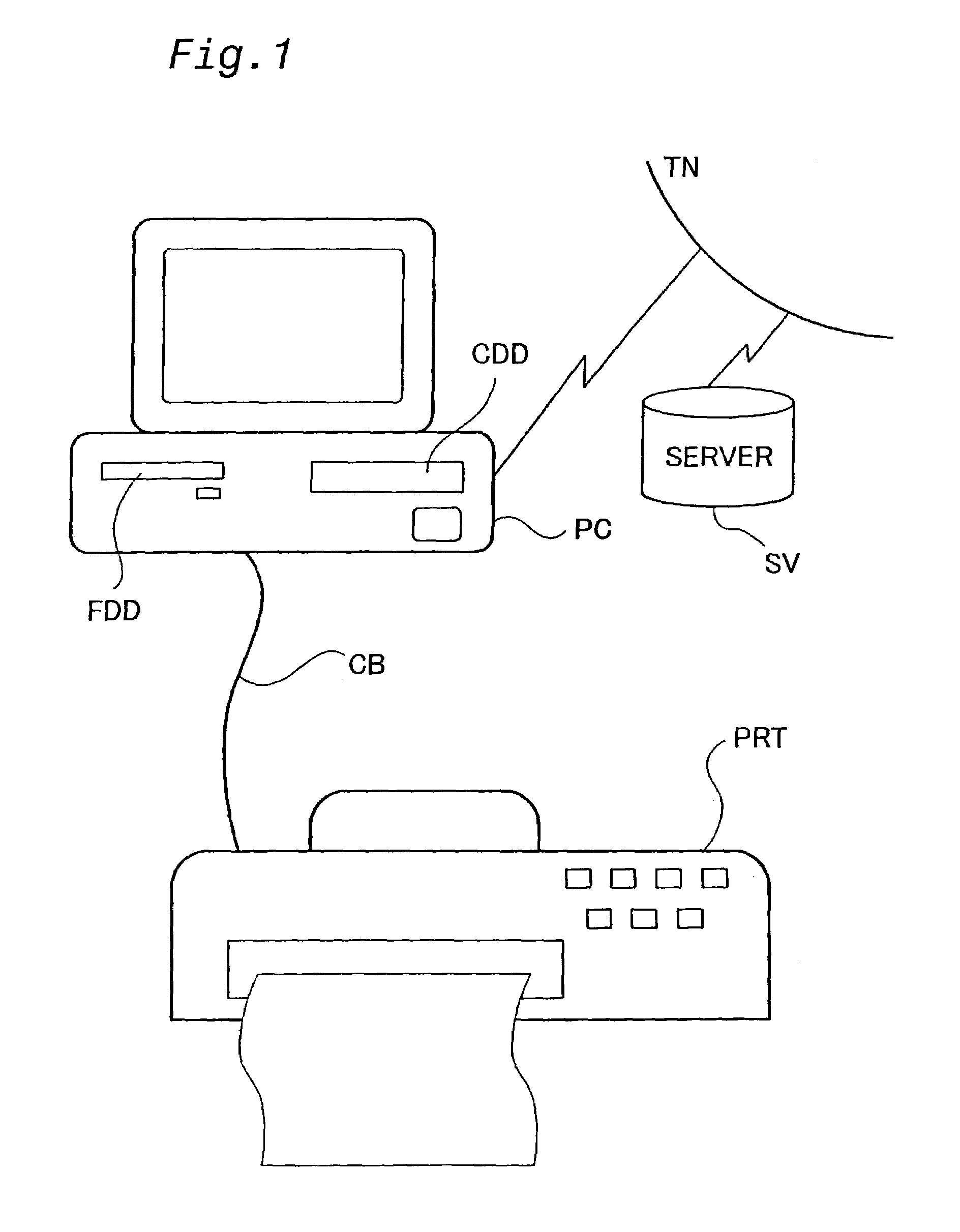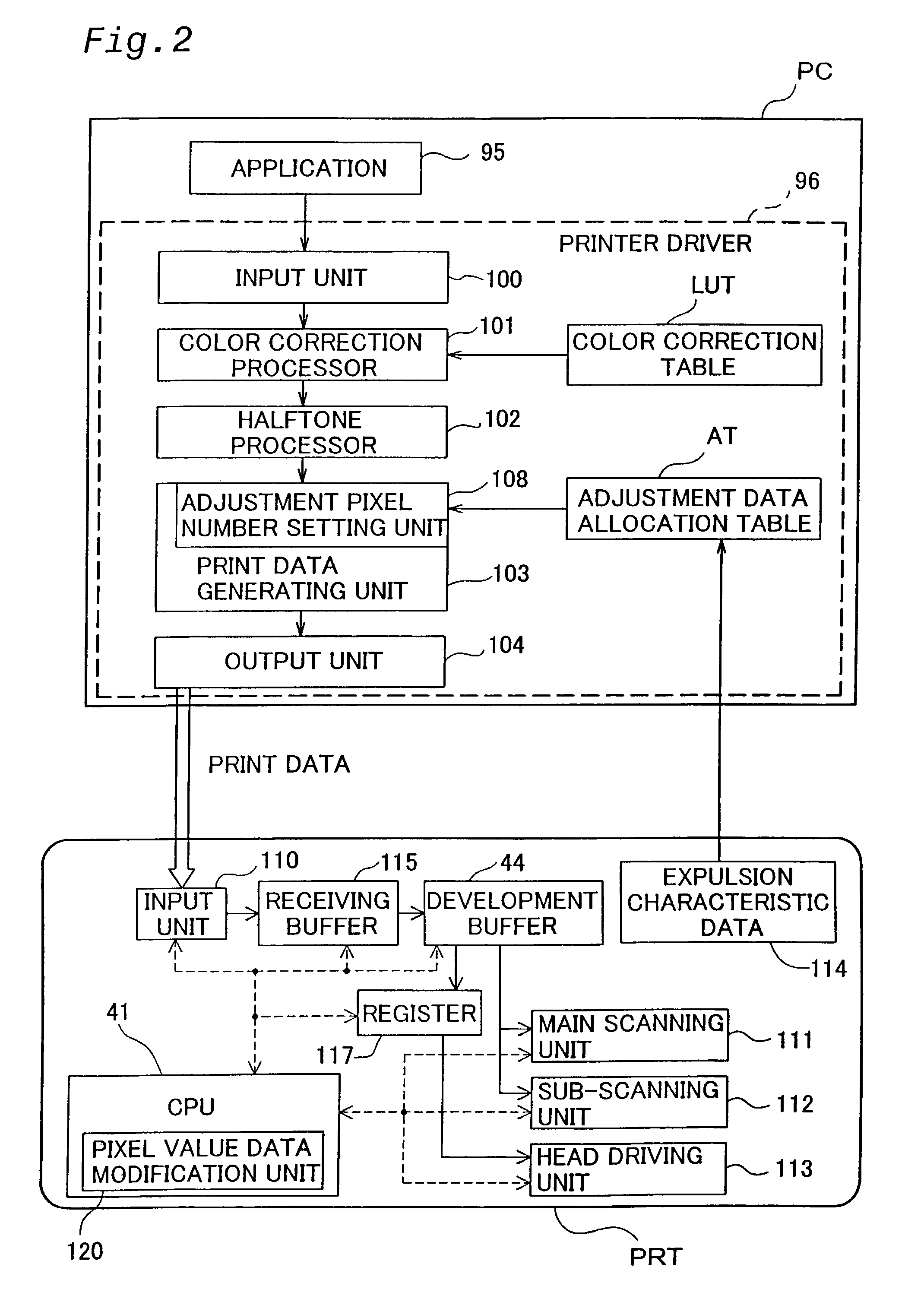Dot formation position misalignment adjustment performed using pixel-level information indicating dot non-formation
a technology of pixel-level information and dot formation, applied in the direction of printing, spacing mechanisms, printing mechanisms, etc., can solve the problems of reducing image quality, image quality deterioration, and the above-described conventional dot formation position misalignment adjustment method has various inherent limitations, so as to reduce the time required for printing
- Summary
- Abstract
- Description
- Claims
- Application Information
AI Technical Summary
Benefits of technology
Problems solved by technology
Method used
Image
Examples
first embodiment
(4) First Embodiment
(4-1) Print Data Generation
[0154]The configuration of the hardware in this embodiment is as described above (see FIGS. 1 through 4). In this embodiment, correction of dot position misalignment is carried out during bi-directional printing, i.e., printing in which printing is performed while the carriage is moving in both the forward and reverse directions.
[0155]FIG. 18 is a flow chart of the print data generating process routine for this embodiment. This process is executed by the CPU of the computer PC. When this process is begun, the input unit 100, the color correction processor 101 and the halftone processor 102 (see FIG. 2) carry out image data input, color correction processing and halftoning, respectively (steps S10, S20, S30). These processes are the same as those shown in FIG. 7.
[0156]Next, the print data generating unit 103 determines the subject nozzles and the formation direction (step S35). As explained previously (see FIG. 17), where the feed amount...
second embodiment
(5) Second Embodiment
[0182]FIG. 27 is a drawing showing the configuration of the function blocks of a second embodiment. In the second embodiment, the printer driver 96 contains function blocks of, in addition to the input unit 100 and the output unit 104, a normal printing module 105, a test pattern printing module 106, and a test pattern memory unit 107. The configuration of the printer PRT is the same as that described above with reference to FIG. 2.
[0183]The normal printing module 105 is a comprehensive function block representing the color correction processor 101, the color correction table LUT, the halftone processor 102, the print data generating unit 103, and the adjustment data allocation table AT. The test pattern printing module 106 prints test patterns based on test patterns stored beforehand in the test pattern memory unit 107. Therefore, the second embodiment effectively adds the new function of printing test patterns to the functions included in the above explanation...
third embodiment
(6) Third Embodiment
[0202]FIG. 32 is a drawing showing the function blocks of a printing apparatus. The third embodiment differs from the first embodiment with regard to the head driving unit 113a in the printer PRT and the print data generating unit 103a in the computer PC. It is identical to the first embodiment regarding other components. The head driving unit 113a in the printer PRT has a drive signal generating unit 116. While explanation is omitted in connection with the first embodiment, the head driving unit 113 of the first embodiment also has a drive signal generating unit. However, the drive signal generating unit 116 of the third embodiment is characterized in that it generates drive signals to drive each nozzle based on four base drive signals explained below. The print data generating unit 103a has a pass splitting unit 109 that determines which of the base drive signals will be used to record the image pixels in the raster line.
[0203]While explanation is omitted in co...
PUM
 Login to View More
Login to View More Abstract
Description
Claims
Application Information
 Login to View More
Login to View More - R&D
- Intellectual Property
- Life Sciences
- Materials
- Tech Scout
- Unparalleled Data Quality
- Higher Quality Content
- 60% Fewer Hallucinations
Browse by: Latest US Patents, China's latest patents, Technical Efficacy Thesaurus, Application Domain, Technology Topic, Popular Technical Reports.
© 2025 PatSnap. All rights reserved.Legal|Privacy policy|Modern Slavery Act Transparency Statement|Sitemap|About US| Contact US: help@patsnap.com



